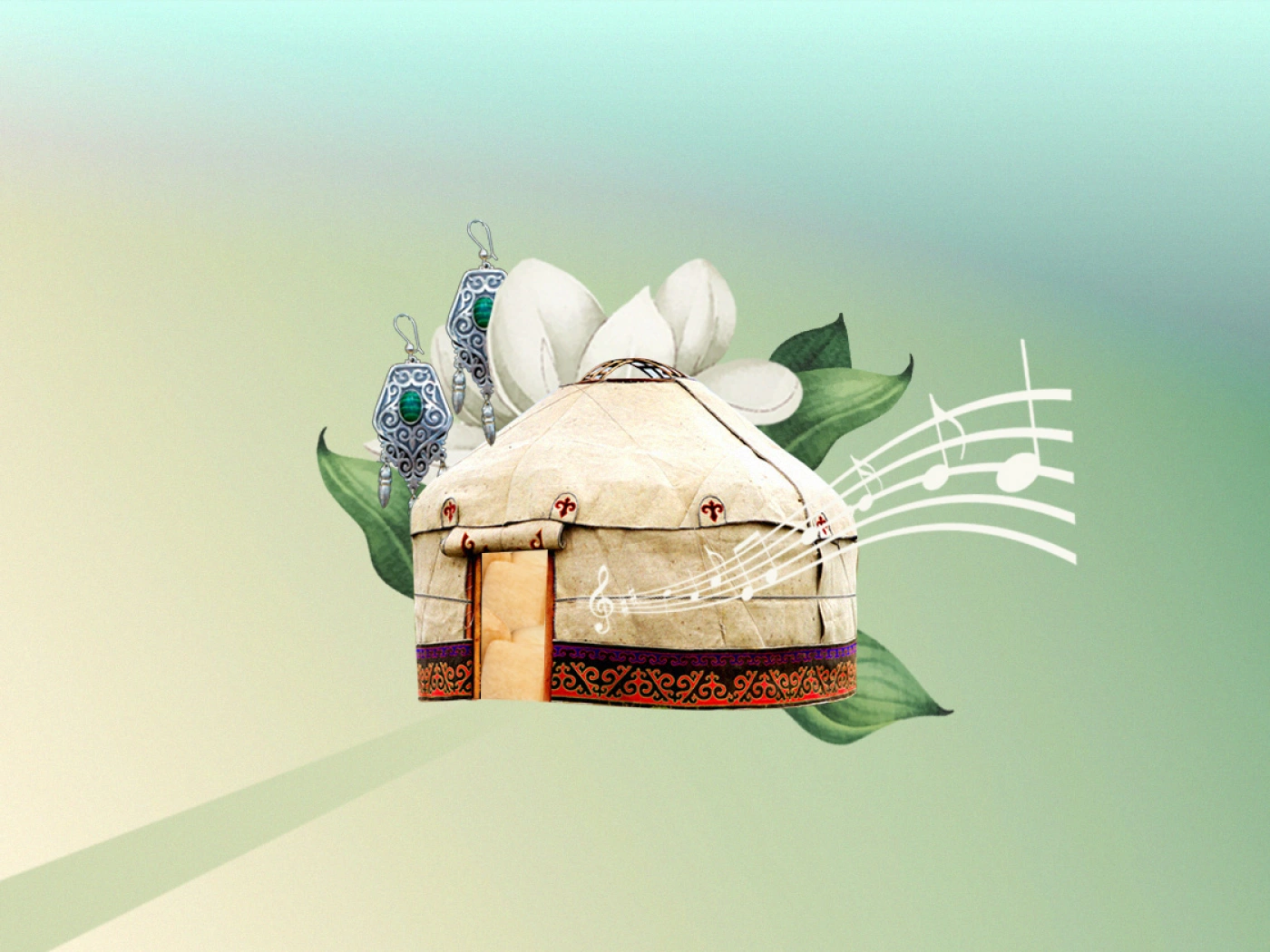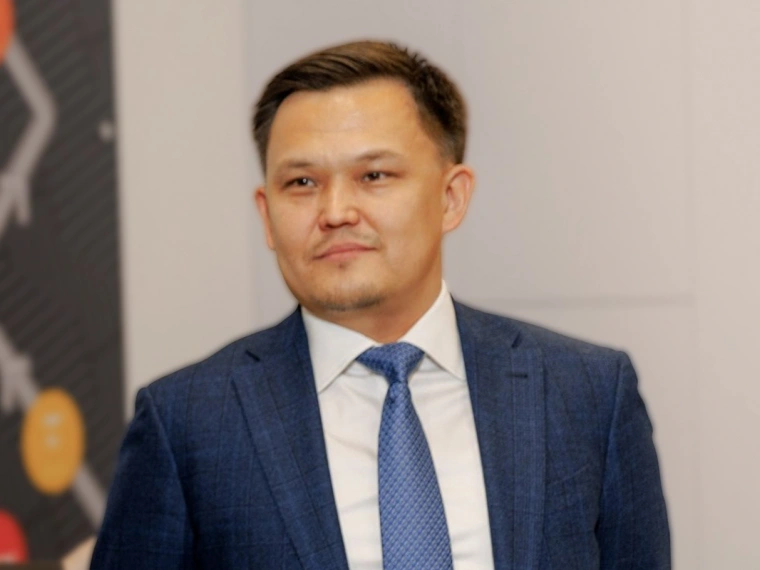
Ancient traditions and modern interpretations: Kazakh wedding rituals
Weddings have always been the most lavish and favorite event in Kazakh families. Traditional preparations and celebrations were always very long: they lasted for days or even weeks and had their own rituals and rules to follow.
Generally, weddings consist of three main events: meeting of the parents, the bride’s leaving, and the wedding itself in the groom’s village. In this article, we discuss in more detail what these occasions looked like in the past and what a modern wedding looks like now.
Qūdalyq: The Parents’ Meeting
Arranged marriages were common in many cultures around the globe, as they acted as a strong tool to secure the status and wealthiness of many families. In ancient times, Kazakh parents made choices for their children. Although personal reasons played a huge role in decision-making, families needed to pay attention to other details as well: the age gap of the couple (man should be older for no more than 25 years; a woman should be older for no more than 8 years) and ru, clan affiliations. The latter served as proof that the future couple was not related to each other.
First and foremost, potential in-laws had a meeting, namely a qūdalyq. It is interesting to note that some families, who were friends, arranged the marriage while their children were young. In some rare situations, parents could arrange a partner for their children even before their birth.
As different clans lived far from each other, the groom’s side had to travel quite a long distance to the bride’s house. During the first evening, conversations about marriage were off the table: guests, hosts, and their relatives chatted about life and enjoyed dinner. While the main question was deliberately ignored, the families were closely observing and analyzing each other to see if they still wanted to proceed with the marriage.
The day after the first meeting, families started discussing weddings and told stories, tales, and songs. After the bride’s side showed interest in the marriage, the groom’s side openly proposed. Then, all her relatives except her parents were supposed to leave the house, while the latter discussed details of the future marriage and qalym – the amount they would receive as payment for their daughter’s departure. An ‘oral contract’ was made, which was a way to secure a deal and arrange fines in case any sides would back up. Families exchanged gifts, spoke highly about each other, and ate from the same plates, as a sign of becoming relatives soon.
Afterward, the official preparations began. The bride’s relatives picked out all the property they wanted to give to their daughter for her future life: jewelry, clothing, dishes, blankets, etc. Meanwhile, the groom’s family was partially giving qalym to her family and preparing for the celebration in their village.
Often the future couple would meet for the first time in the midst of wedding preparations. The groom’s visits were always very loud and exciting. He had to go through different funny, but challenging games, for example, entering her house properly and greeting her and her family. If the groom failed to win, he had to give gifts or pay. Further dates and meetings of the future couple were called qalyñdyq oinau (playing a marriage).
Qyz Ūzatu Toi: The Farewell of the Bride
Marriage for a bride meant leaving her own family and joining a new one. Since she would be going to a very distant village, her departure was like going somewhere abroad. That is why her family prepared a special celebration called qyz ūzatu toi, so the bride could say farewell to all her loved ones.
Qyz ūzatu toi was a huge celebration with fun games, delicious food, and tearful songs. The majority of the guests were her friends and family, so this event was often seen as a wedding for the bride’s side. Nevertheless, the groom was also there, accompanied only by 7-9 companions from his family.
Music was an essential part of the event. The bride wrote and performed her own song called syñsu (cry) before leaving her family. The verses were always about love to her parents, family, and friends, losing her independence, and entering a new life, so this was always the saddest part of the evening. Another important song was jar-jar (“friend-husband”) sung by the choir of young men and women, often the bride’s friends. This song consisted of male and female verses: men’s lyrics were about a great life full of the love of the new husband and his family, while women’s lyrics were about her blood relatives and the end of her light and careless life.
Closer to midnight, the groom and the bride with their companions departed from her village. The couple walked out on a special white cloak aq jol, which was both a wish of safe travels and a symbol of a great future together. The bride was often advised not to look back, so her marriage would be happy and long-lasting.
Üilenu Toi: The Wedding
After all of the bride’s property was loaded onto the caravan, she, her mother, sisters-in-law, or younger brother left off with the future husband and his relatives to their village. Upon arrival, they were greeted by a few female relatives (often sisters-in-law of the groom), who carried a big white cloak to cover the bride. It was important that nobody in his village saw her face before the celebration itself. Inside the home, when the bride and her companions entered the yurt, the groom’s relatives threw candies and sweets in the air. This was a ritual called şaşu: a symbol of a sweet future full of happiness and joy. Lastly, women put the white cloak over the bride’s head, hiding her face until the ceremony.
The ritual described above continued on the wedding day. A betaşar was an important part of the evening since it was a moment when guests and relatives met the bride for the first time. The ritual name was literally translated as “opening the face”. The bride had a white cloak covering her face, so no guests could see her. The young man, often a family’s friend, sang a song in two parts. The first verse was about the beauty and qualities of the future wife, while the second part was a tale about the groom, his family, and their rules. Thus, the song was a lecture for the young woman to learn how to behave in the new environment. Despite the serious purpose of the ritual, there were comedic parts to it, as the singer often told some jokes about different family members and mimicked them to entertain guests. Meanwhile, the bride also had to bow and greet her new relatives. Only after the end of the song the mother or sisters-in-law lifted the white cloak, and the bride met all of her new relatives for the first time.
Interestingly enough, the groom had quite a passive role during his wedding. He was mostly following küieu joldas (the equivalent of the best man) ideas and suggestions. This role was often given to a very talented and charismatic friend or brother-in-law of the groom, so they had good chemistry together. The best man had to have good knowledge in traditions and challenges, and often was a big entertainer of the wedding itself.
Modern times
Ancient traditions remained part of history and Kazakh culture has changed significantly since then. First of all, now qūdalyq has a different purpose. Parents of two lovers now can help or advise their children about decision-making, but they no longer have total control of it. This is why arranged weddings are not very common among families. When it comes to organizing a future marriage, the couple and their parents often discuss organizational and financial matters of the celebration: guest lists, restaurant options, splitting the costs, dates.
Indeed, contrary to the weddings in the past, modern celebrations last for one day. Few people organize farewell parties, as the tradition with years has lost the original purpose. However, some couples still decide to hold it. Fun games, dancing, and speeches are common during this event. In order to pay respect to the traditions, the bride might prefer wearing Kazakh traditional attire, leaving her modern white dress for the actual wedding day. After the wedding is over, the groom solemnly takes his future wife to his parents’ home.
Modern weddings often proceed in a banquet hall of the restaurants with dozens of guests from both sides. The historical heritage of being part of the USSR affected the way weddings take place: it became common to hire the professional host – tamada. It is his job to put up a spectacular show for the guests and newlyweds with fun games, dances, musicians, and speeches.
Despite significant modernization of the celebration, few of the traditions of the past are still practiced including betaşar, though it lost its practical value. Some traditions are timeless and hold the same meaning. For example, şaşu is still a very common ritual at many weddings.
Even though the old rituals no longer serve the same purpose, they still are the great heritage that is cherished and loved. The concept of wedding is the same as it was before: it is a great celebration for both sides with a slightly sad feeling that children are now grown-ups and are starting their own family.





